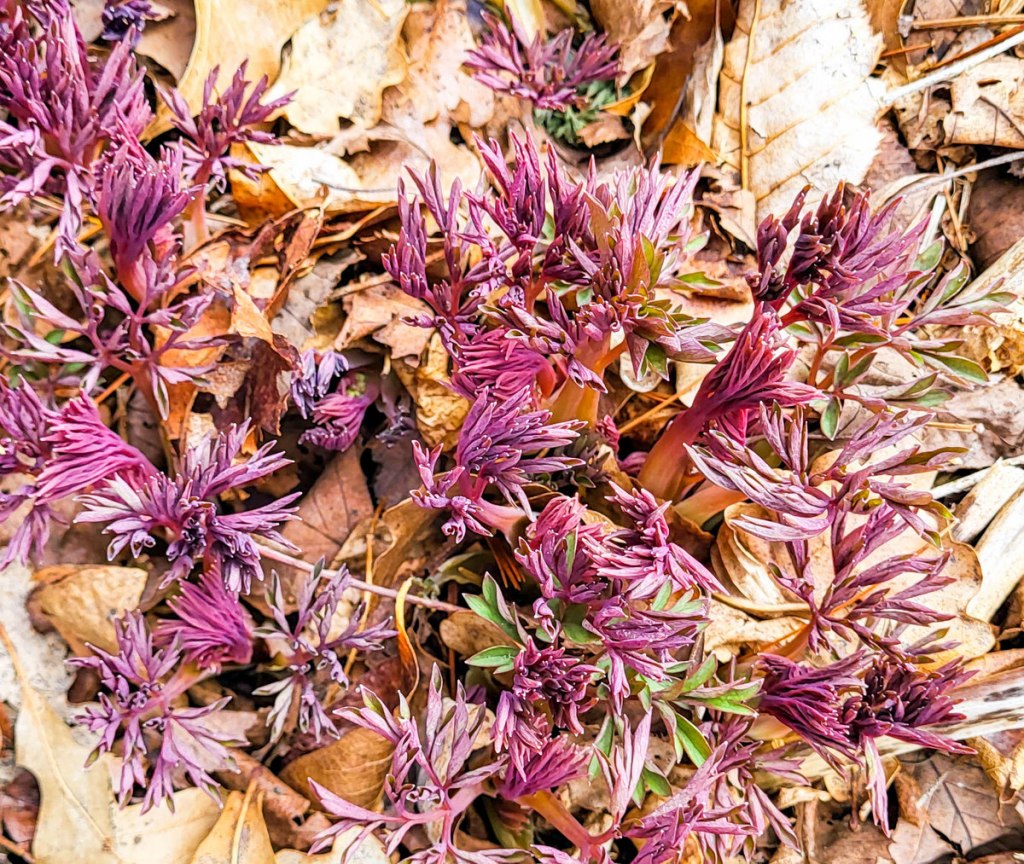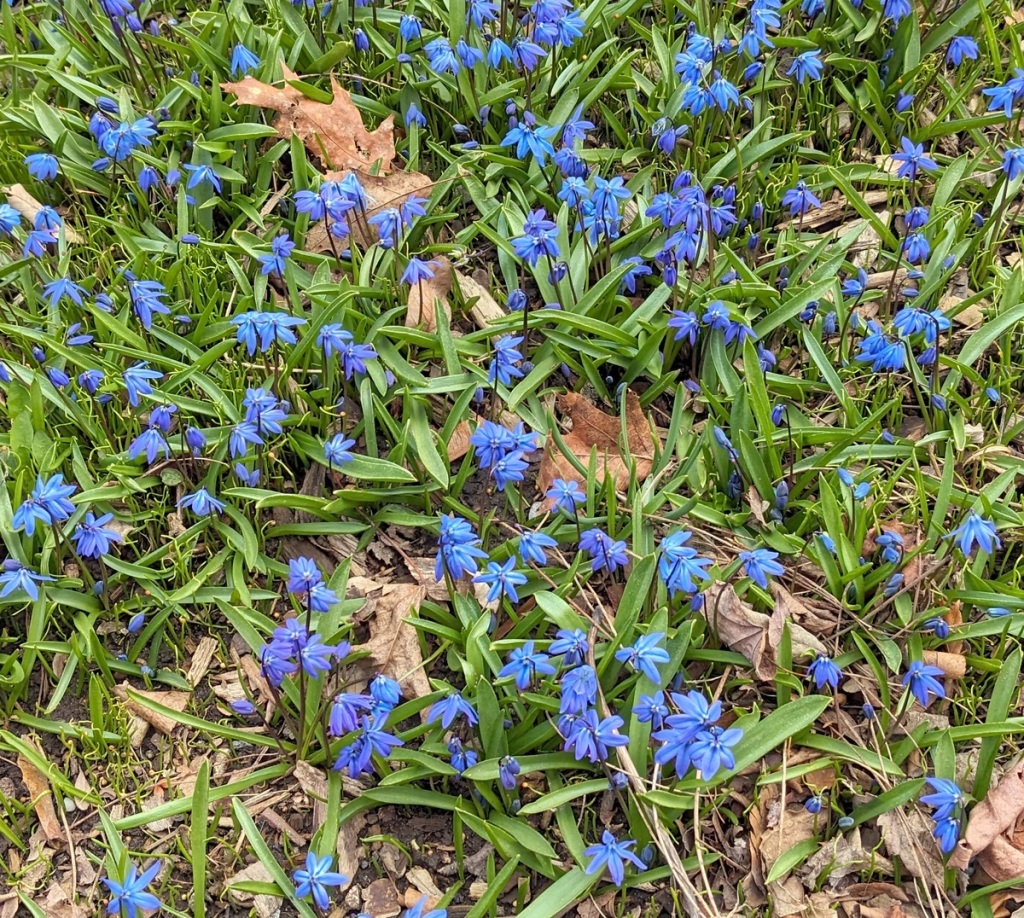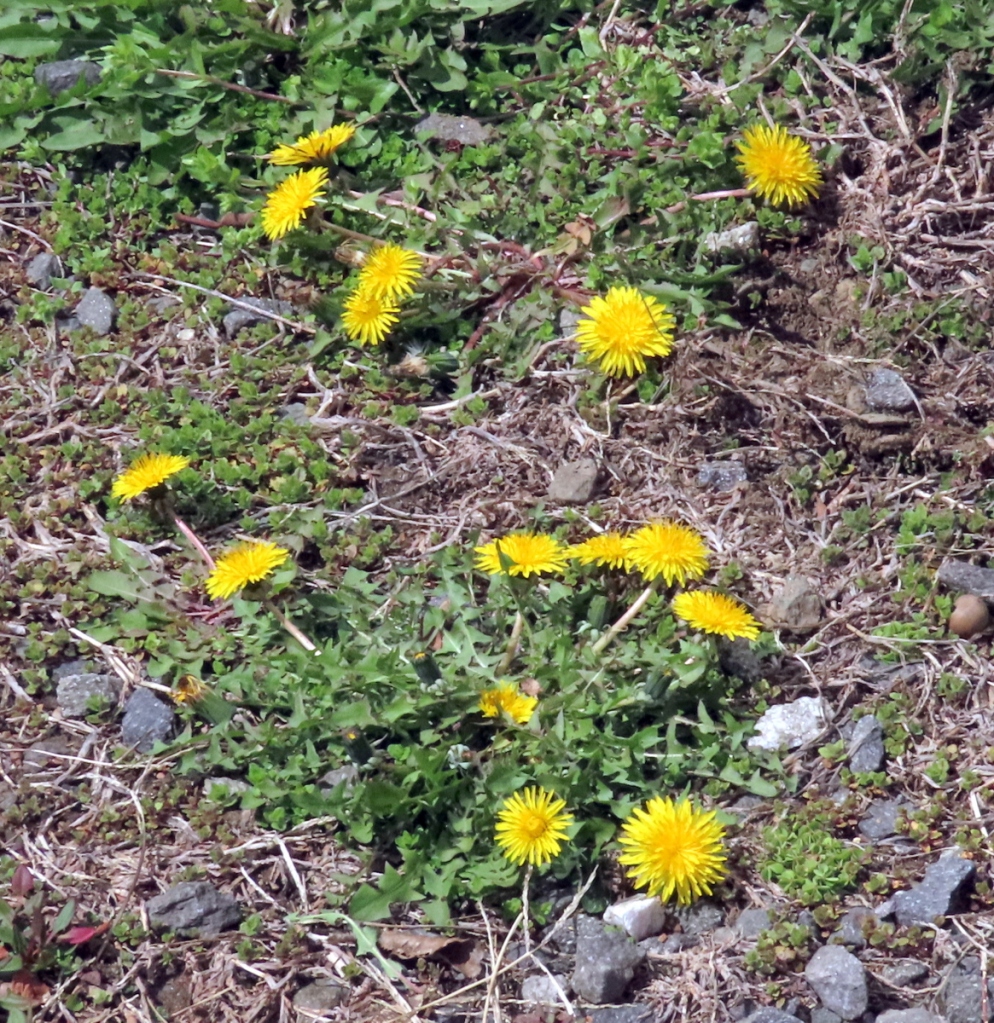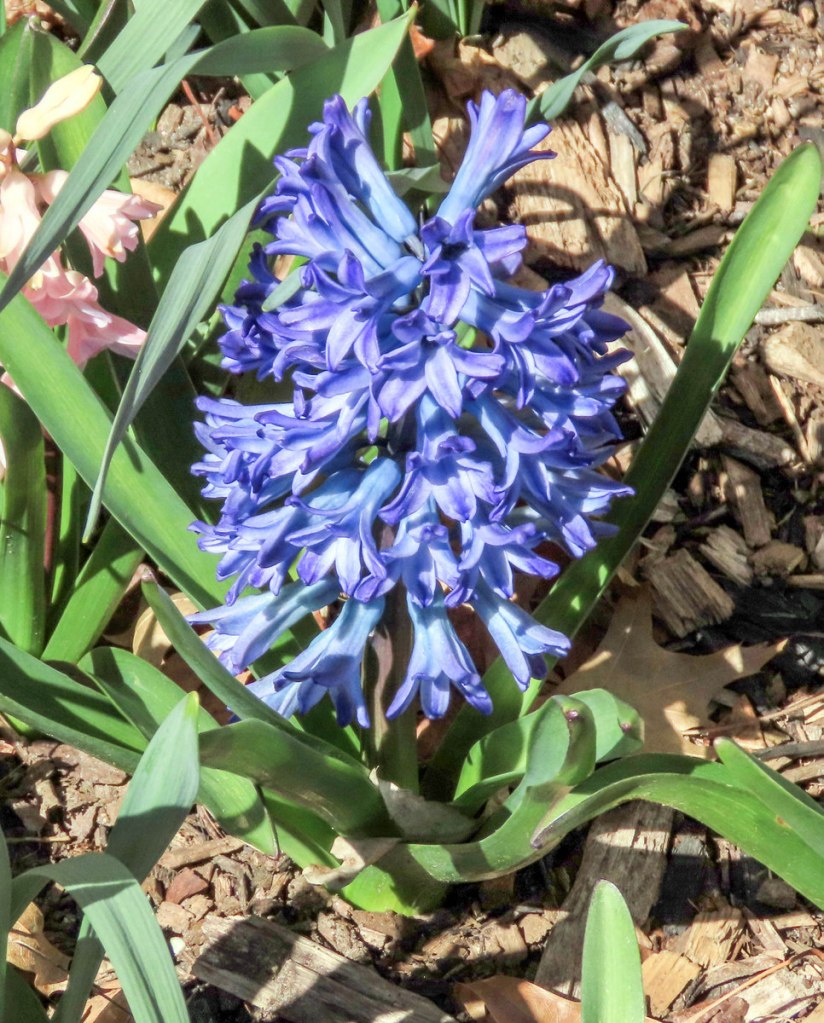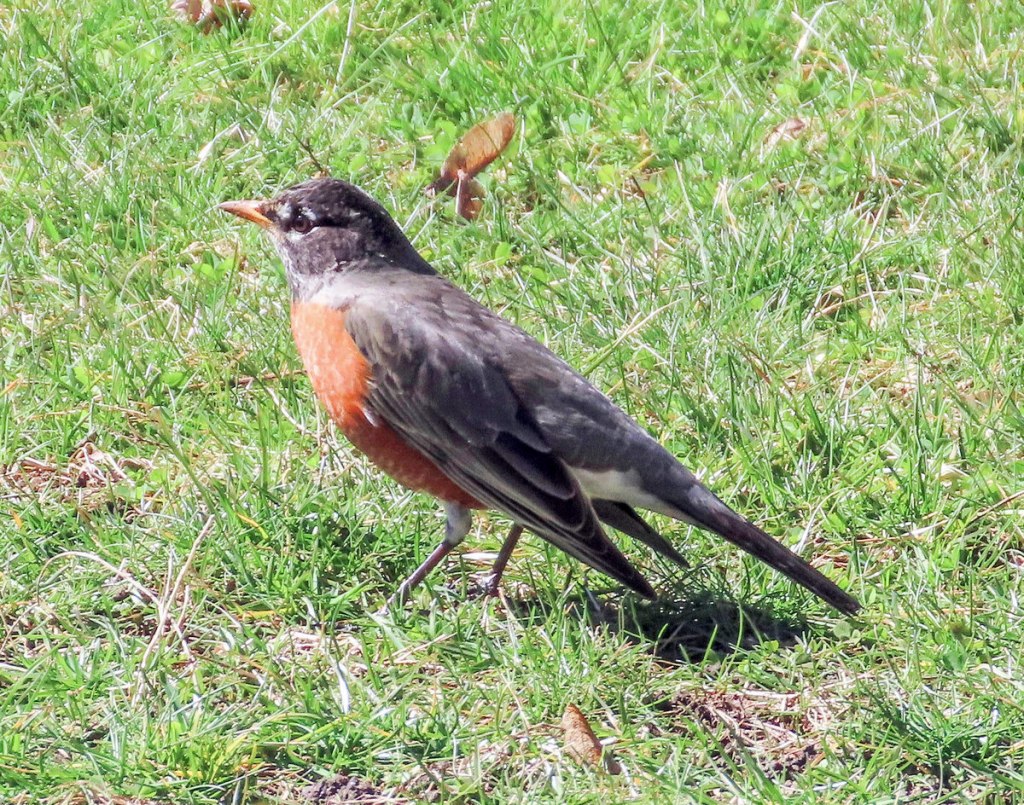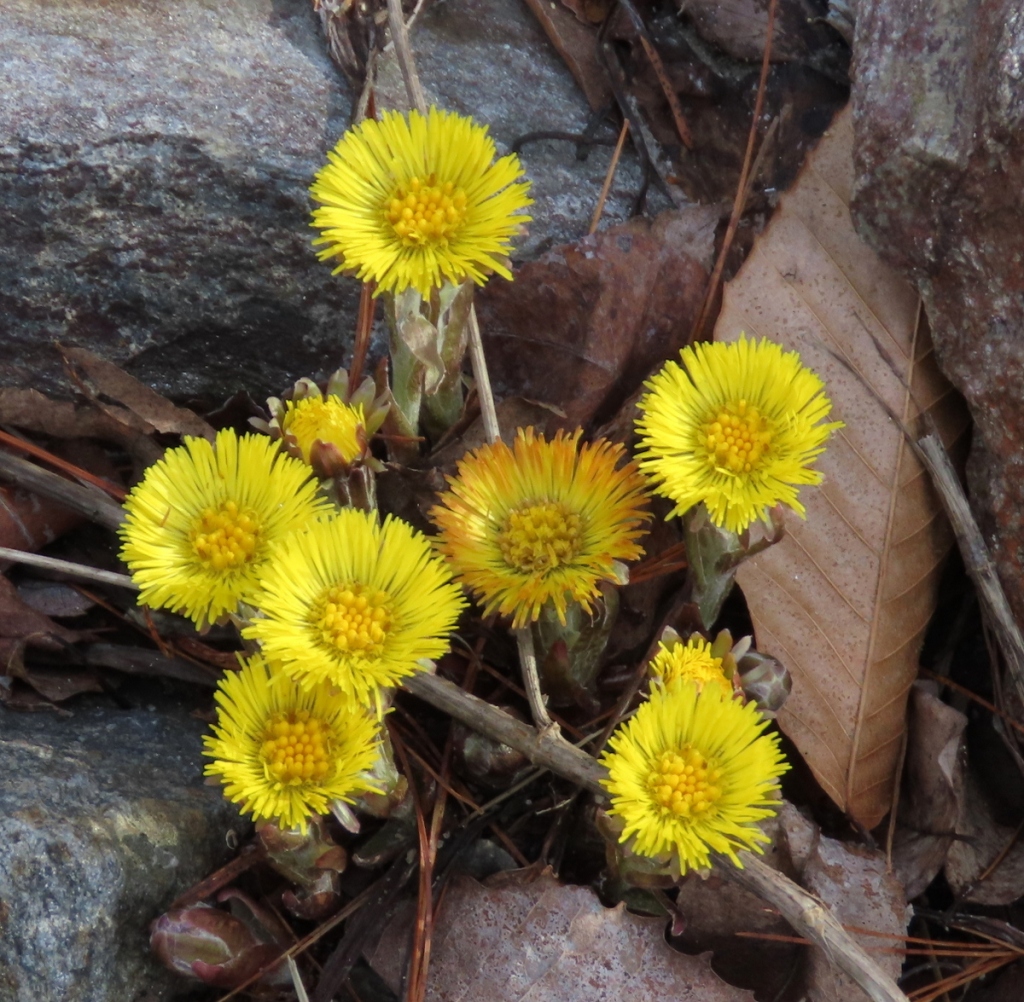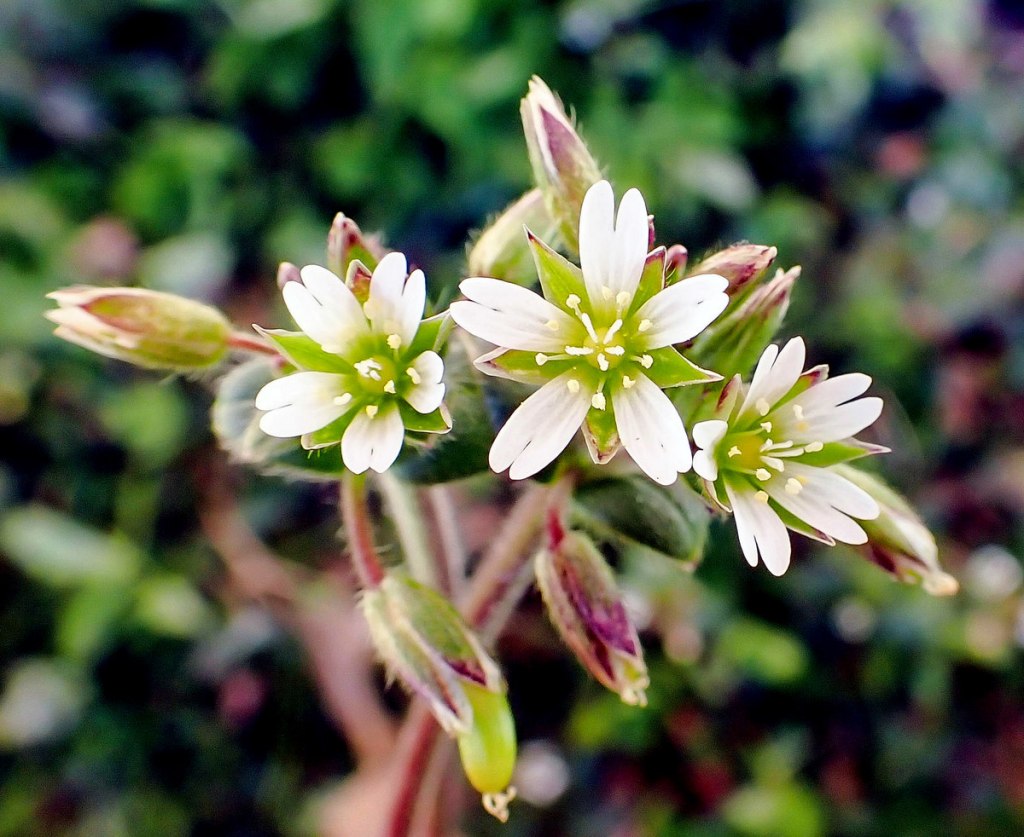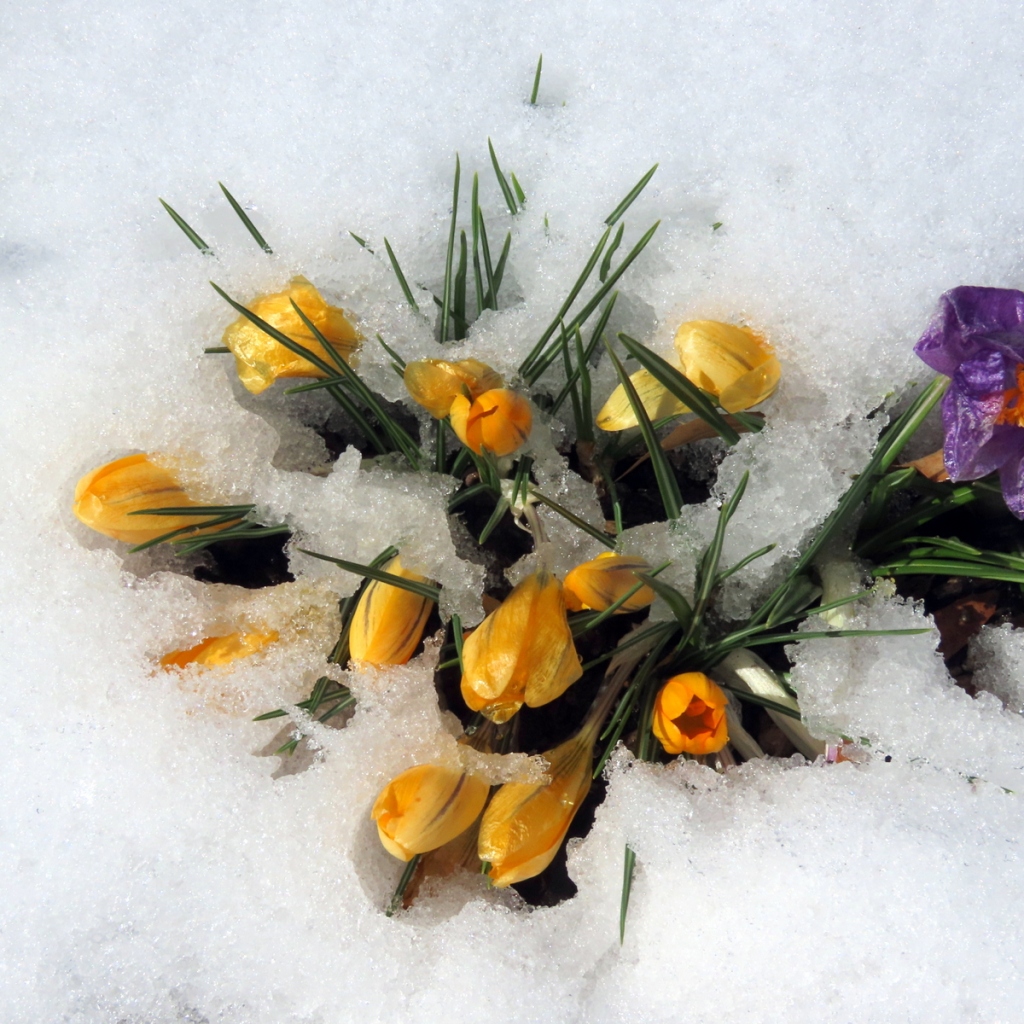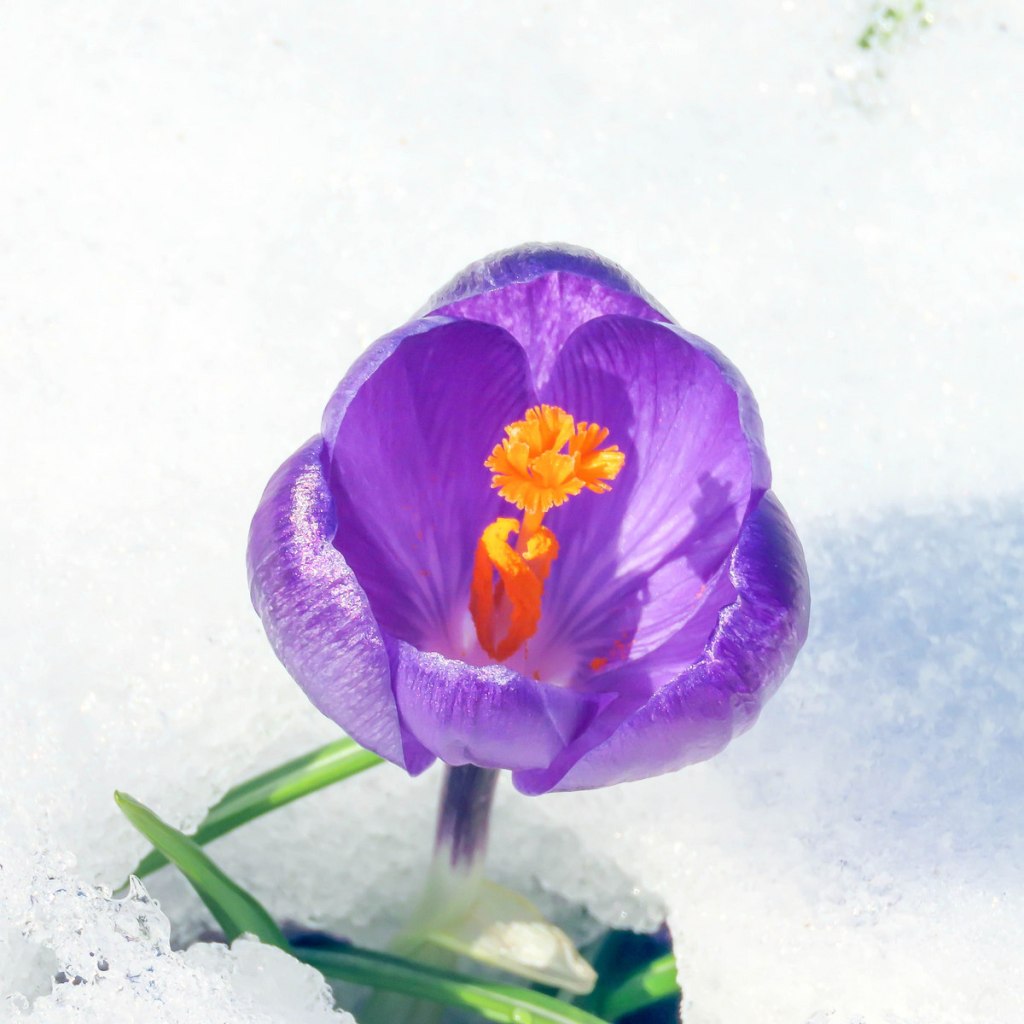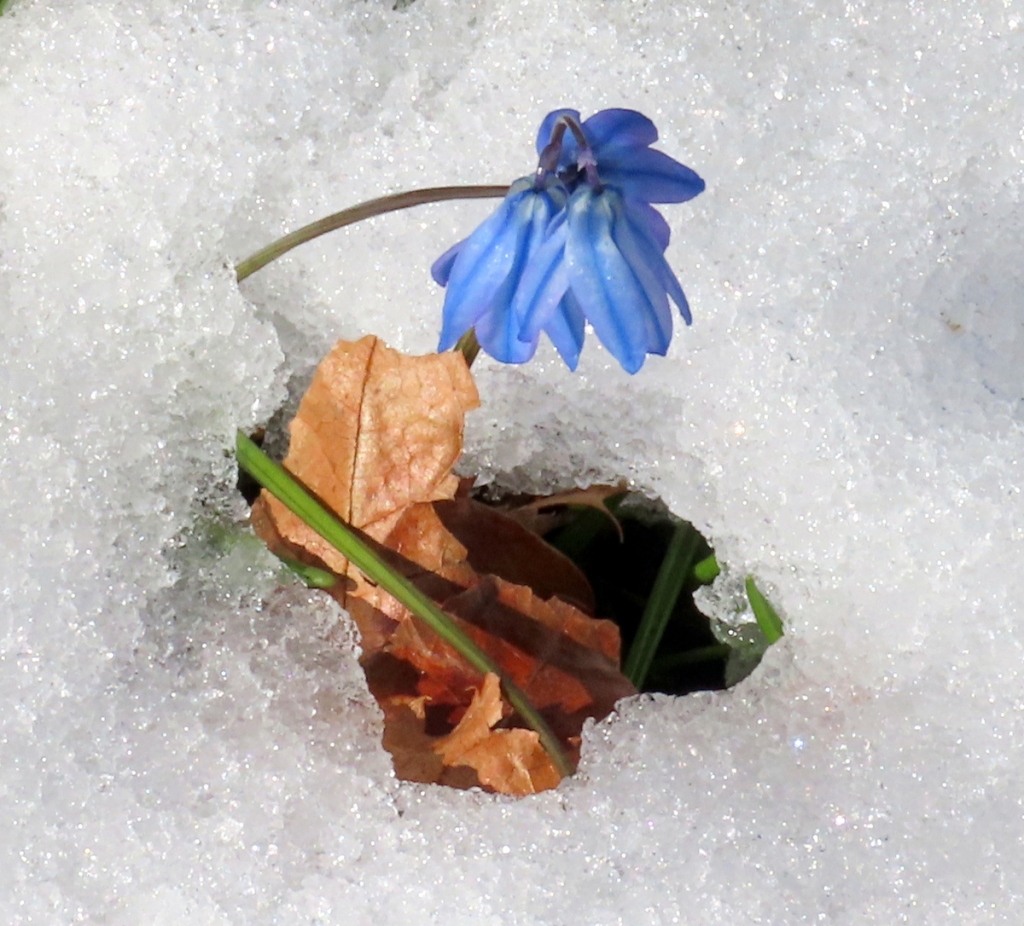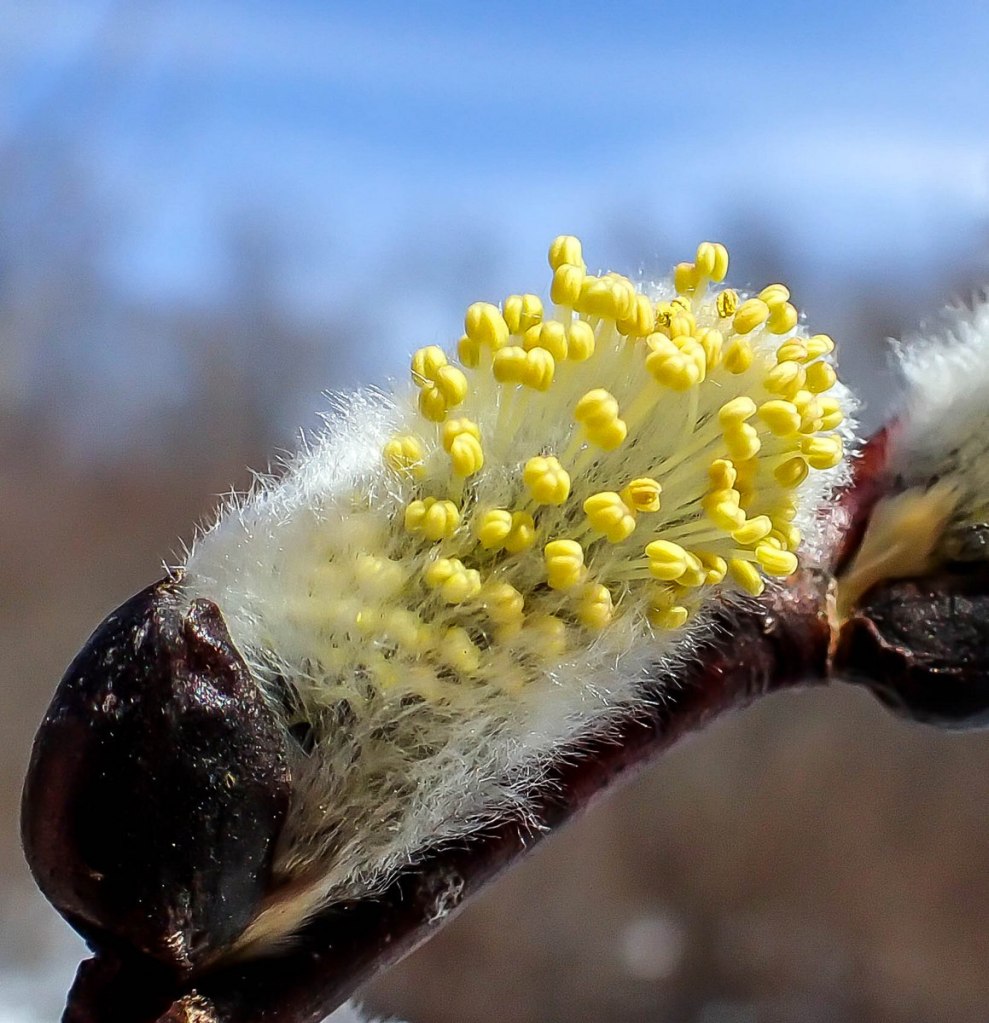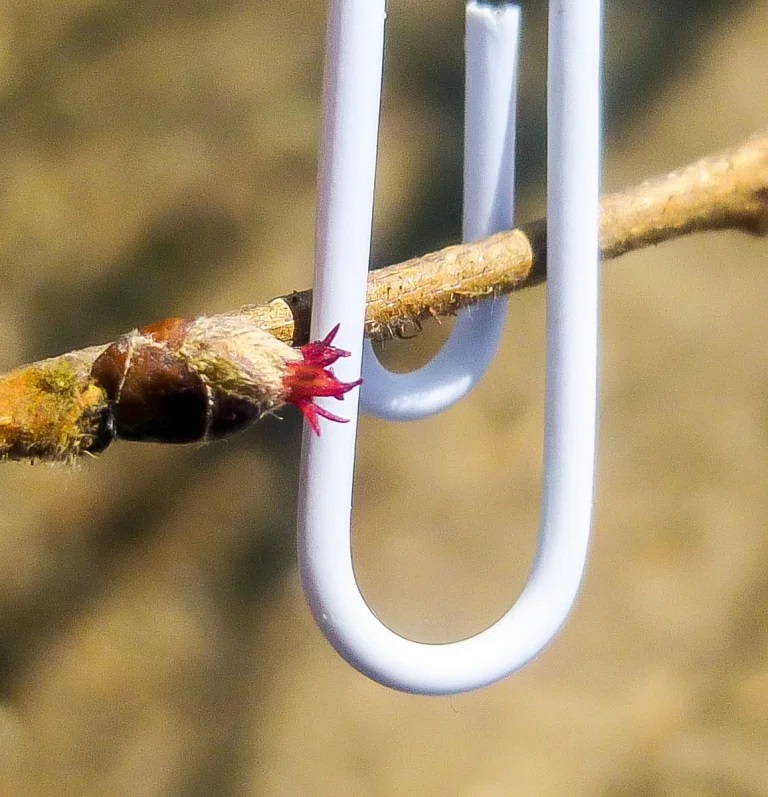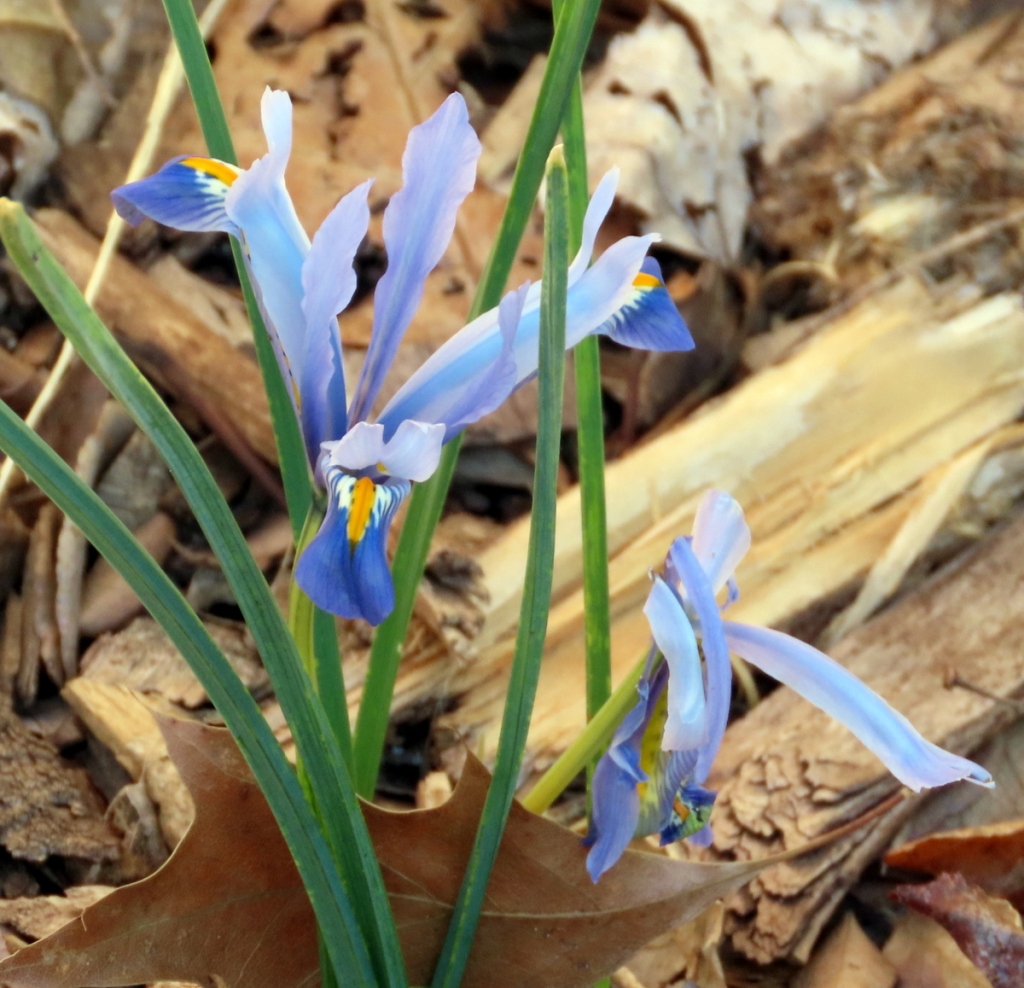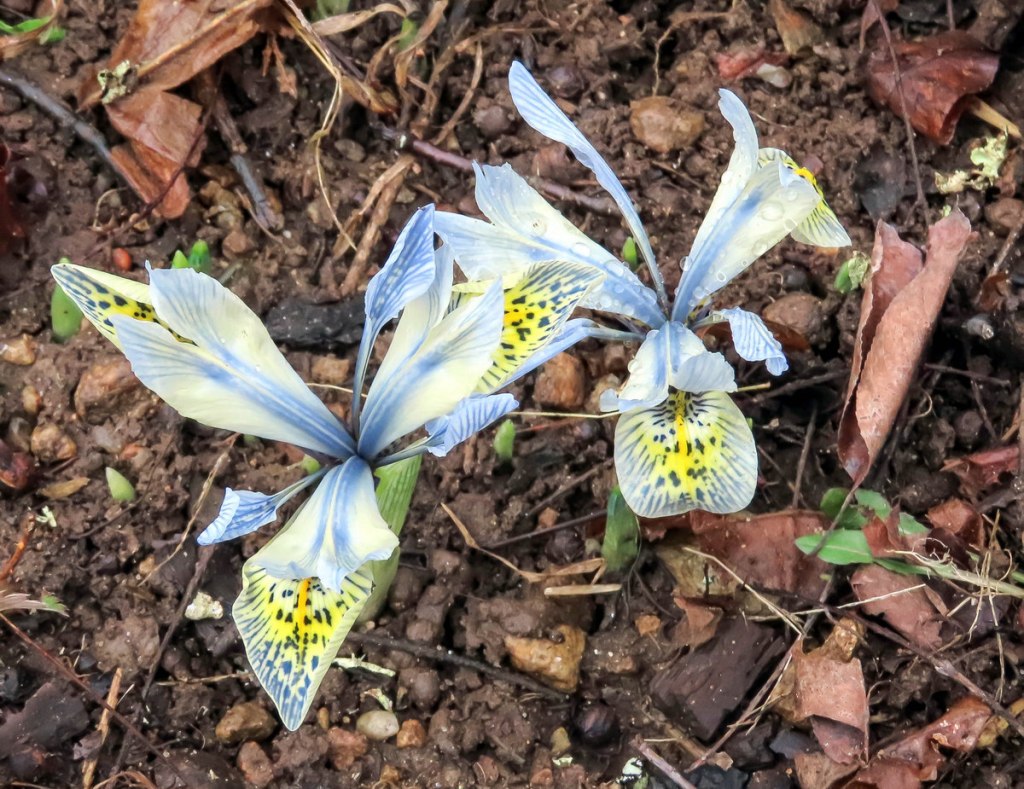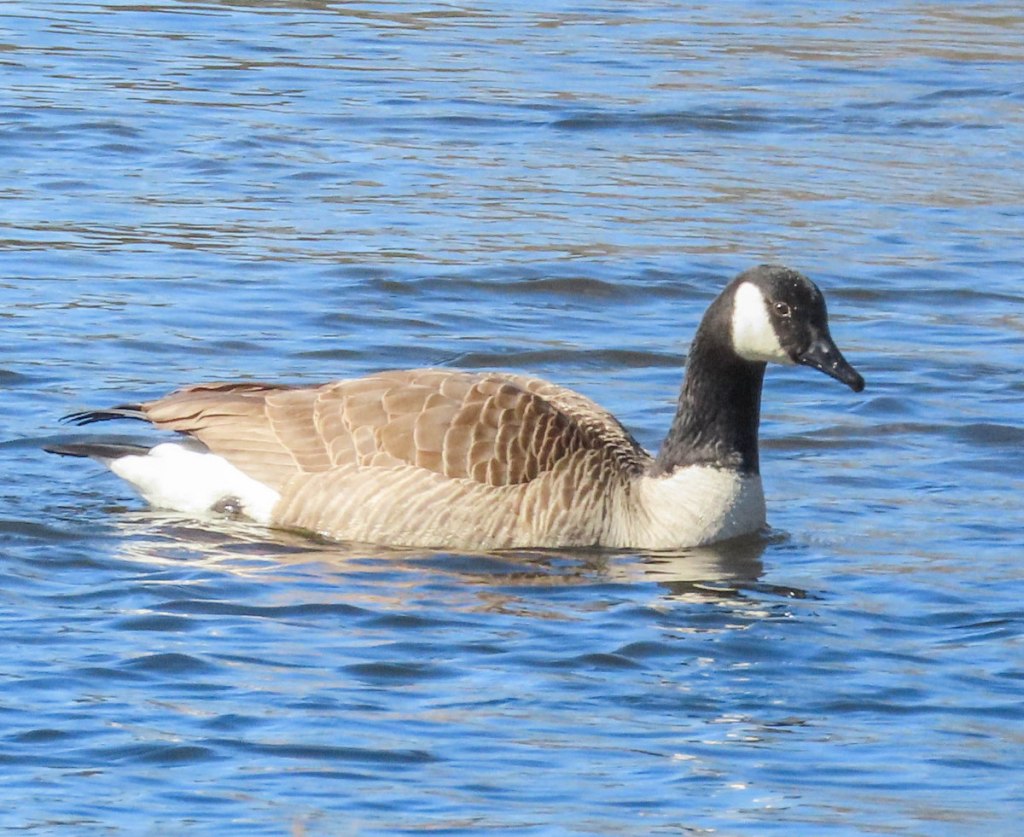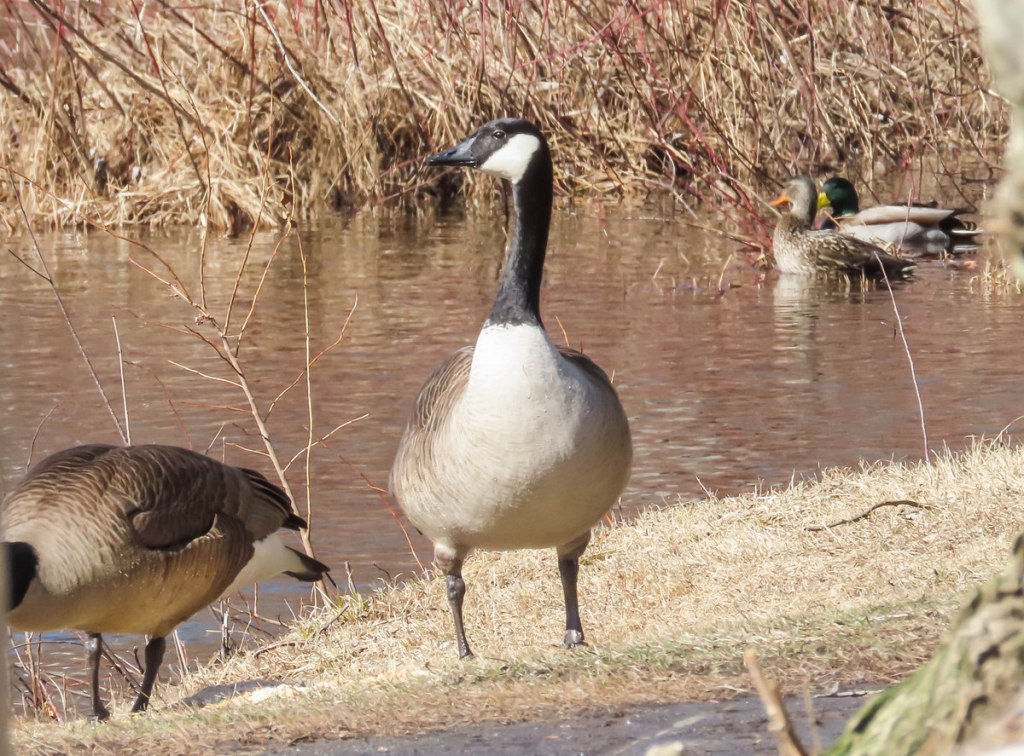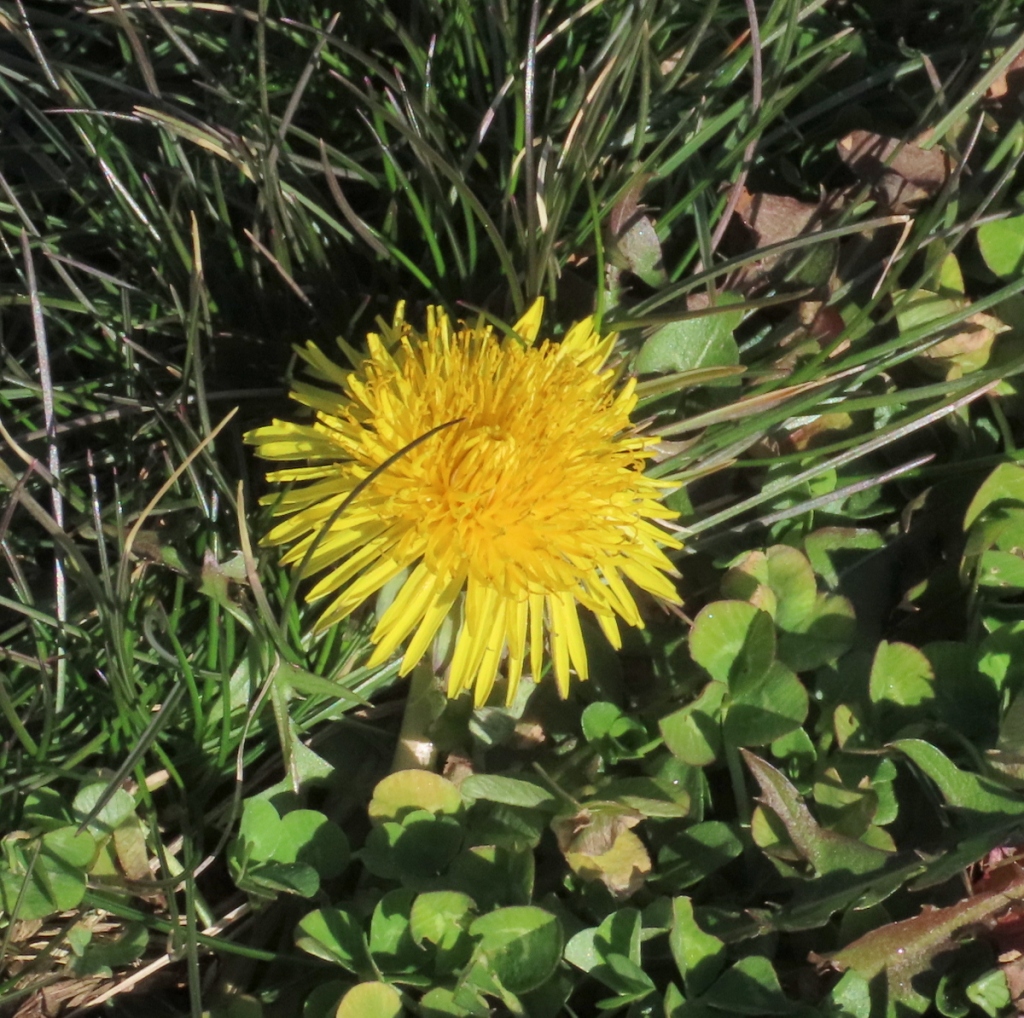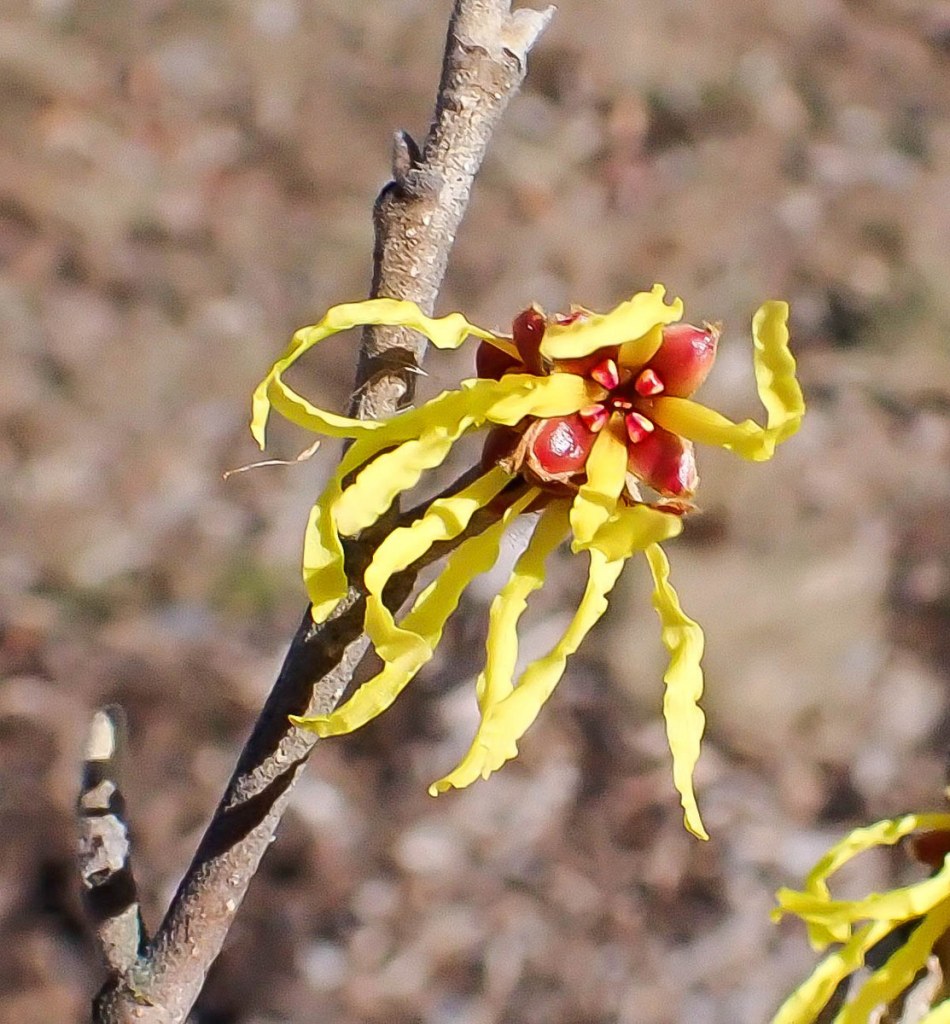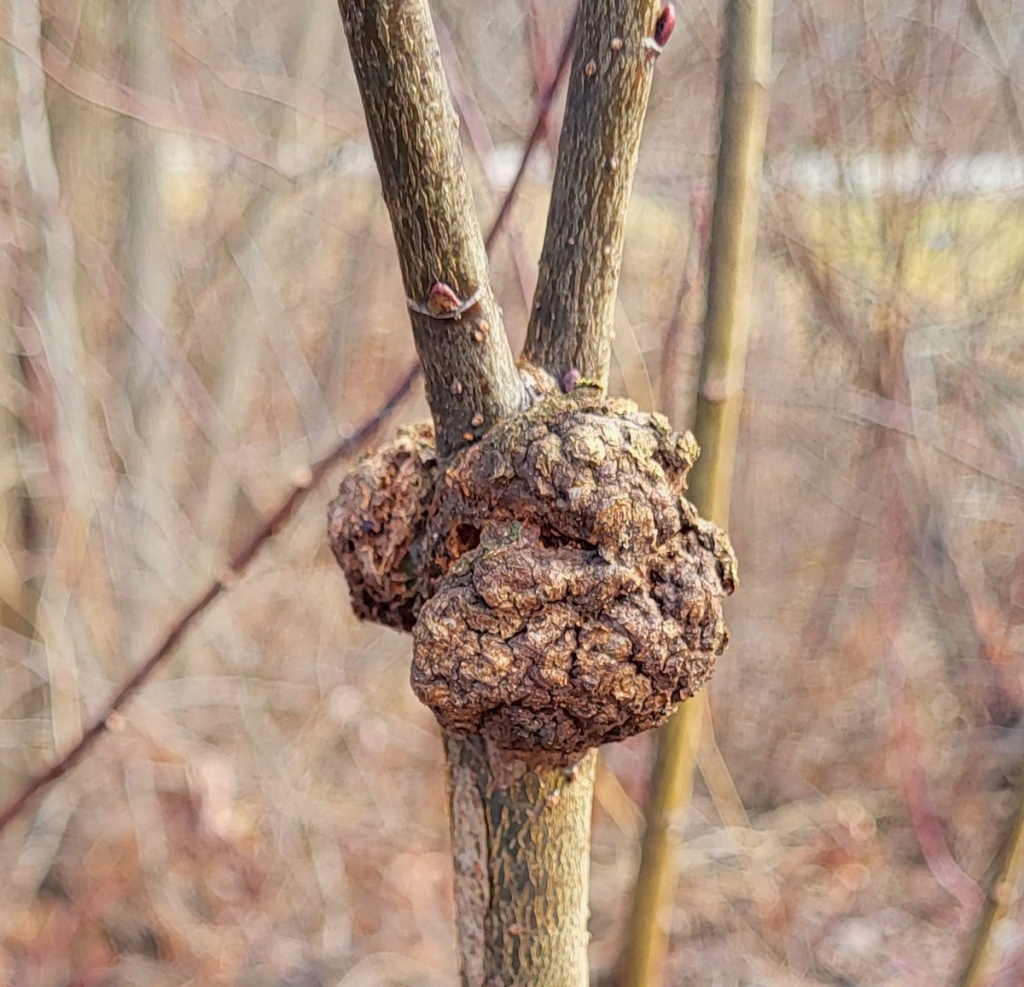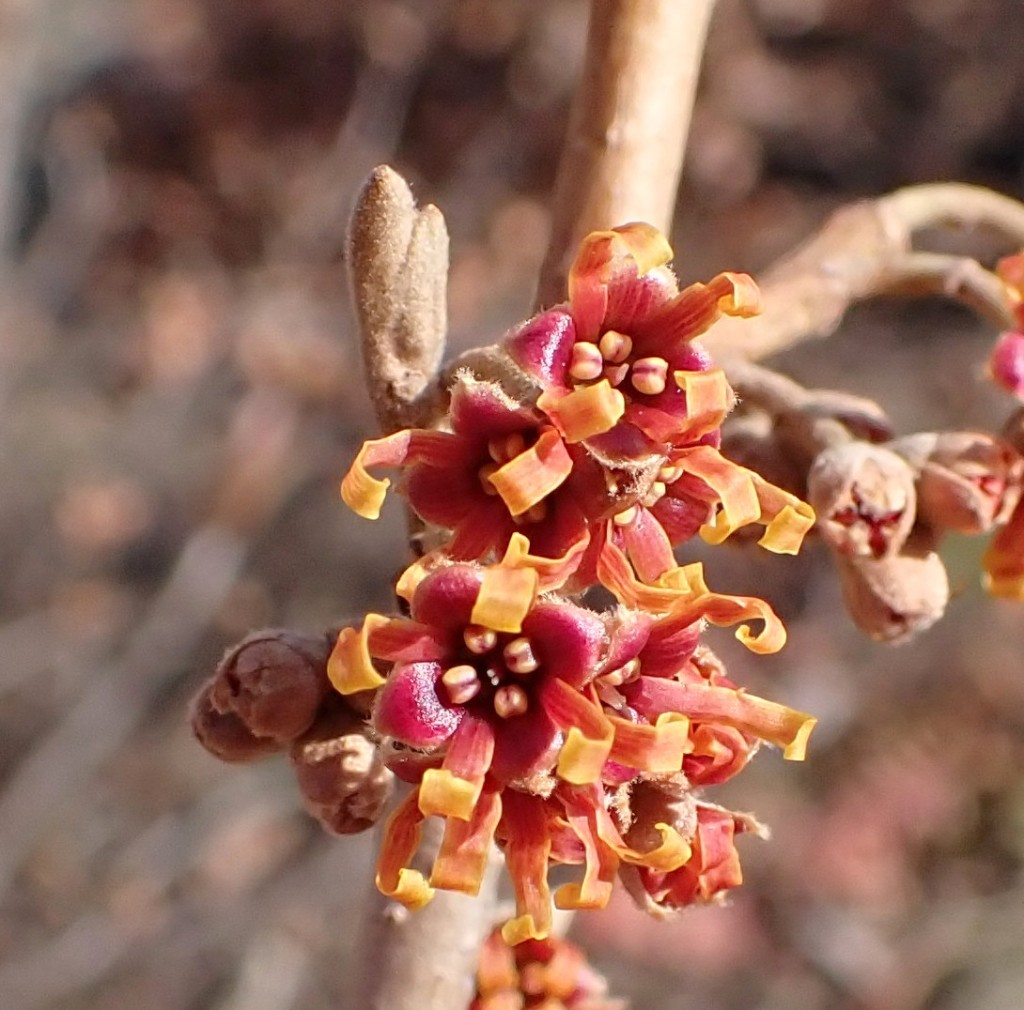
I thought I might find several shades of spring green on the trees up at the Beaver Brook Natural Area but no, most of the trees were still wearing just buds. That wasn’t too much of a disappointment really, because there would still be astounding natural beauty to see here even if there were no trees. I went up there on three different days to take photos for this post. Two days were showery and one was sunny, so if you think you see darker and lighter /wetter and drier photos you aren’t imagining it.

There were ferns coming up everywhere. The cinnamon ferns had grown a lot since I saw them last and were just about ready to transition from the fiddlehead stage to the fully open adult stage.

There were lots of native hobblebushes blooming all along the old abandoned road. The pretty, pure white outer flowers are just for show; there to entice insects. It’s the smaller flowers in the center that will become the fruit. The oval berries will start out green, then turn bright red, and finally ripen to a dark purple. They’re as interesting as the flowers.

I had to stop and see the smoky eye boulder lichens. They’re one of my favorites. On this day they looked like part of the sky fell with the rain, and tiny bits of blue scattered over the rocks. The blue apothecia outlined in black are really striking. The color is caused by the way the light falls on the waxy coating that covers them.

And then of course there is Beaver Brook. I used to lean on that tree to steady myself when I wanted a photo looking upstream but ever so slowly it leaned. And it kept leaning until it finally came to rest as we see it here.

The tree would have been just another log in the brook but it got hung up on others, so for now it leans. What I thought was interesting is how this shot showed that the tree grew for years on a rock, and nobody ever knew it that I know of. Since it was only connected to the earth on one side it’s no wonder it fell. This is a popular spot for dog walkers, who let their pets swim when the water isn’t high. The water does get high at times and will come right up and over where I stood to take these photos. I had an old timer tell me that he saw the water come up over the road years ago but I try not to think about that, especially when I’m here.

I love the way that Solomon’s seal plants unfurl in spring. They come out of the bud in a spiral and have a fluid, flowing, almost musical appearance and I think they’re quite beautiful. The tiny little flower buds will hang down under the stem as the plant ages.

Call it wake robin, stinky John, or red trillium; it’s another of our beautiful ephemeral spring flowers. They grow here by the hundreds on both sides of the old road.

I stopped to see the glittering wood moss, which was quite wet. This is also called stairstep moss because of the way the new growth “steps up” from the old and you can just see that happening just to the left of center. This is a rare moss which usually grows in more northern boreal forests, reaching the Arctic circle, I believe. This is the only place I’ve ever seen it.
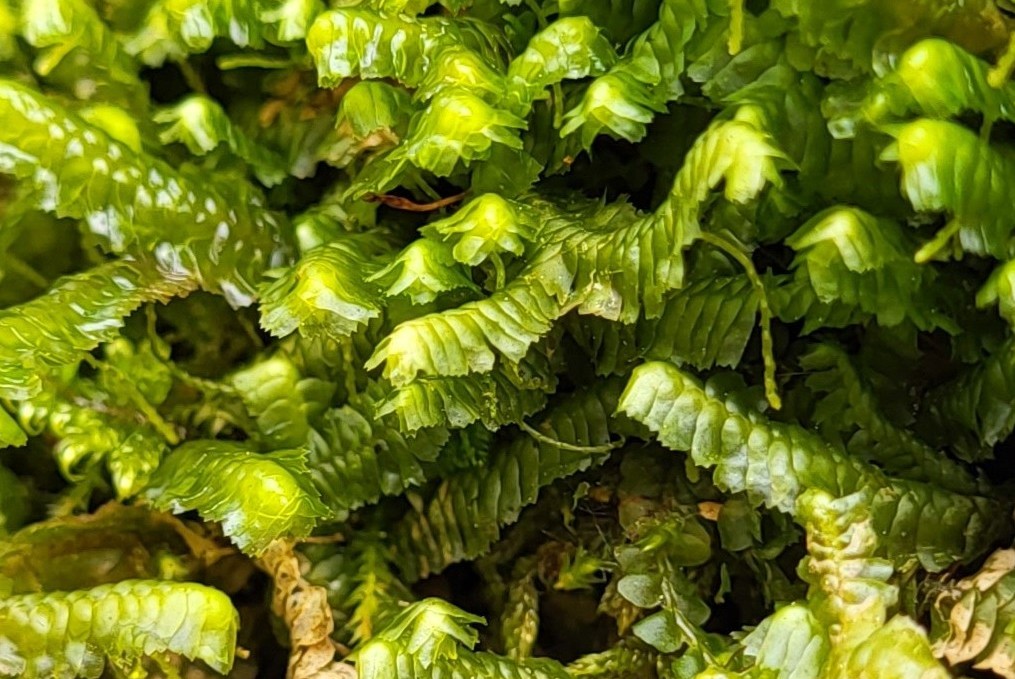
This is not a moss and it isn’t rare either, but every time I see it I wonder how many people glance at it thinking it’s just another moss. It’s actually a liverwort called greater whip wort. It always reminds me of a nest of centipedes and each “branch” is indeed about the size of a small centipede. Its species name is “trilobata” and it gets that name from the way each tiny 1/8 inch wide leaf terminates in three lobes or “teeth.” This liverwort loves to grow on rocks so next time you see a mossy rock take a closer look. You might see a liverwort.

This moss is also rare in this area. It’s called rose moss for obvious reasons and it is another moss that prefers growing on stones. Limestone actually seems to be its favorite and it’s a good indicator that limestone is present in the area. I don’t know how rare it is nation wide but this is the only place I’ve ever seen it. I like the way its growth habit makes it look like tiny flowers. It’s a very pretty little moss.

I’ve known this dog lichen for many years but this year for the first time it was showing a huge burst of new growth. As we see here the older part of the lichen forms the dark background and the new growth is the tan /red-brown lobes in the foreground. This is what it looked like when it was wet…

…and this is what it looked like when dry the next day. The difference was really amazing; all the new growth now had frosted edges. I know it is a dog lichen but I didn’t try to find out its species name. As I look back on this blog I see that it is most likely the scaly pelt lichen (Peltigera praetextata.)

The walk to the end of the old road is a steady but gentle uphill climb the whole way. Unless they happened to have weak lungs most people would hardly notice it.

New beech leaves were everywhere, and they were beautiful. They are why walking here in the fall is like walking through a painting.

New maple leaves were everywhere too. I’m not sure why this tree thought its leaf stems needed to be so long but it knows more about what it is doing than I do.

This maple was more like what I expect to see at this time of year. The red coloring is so the leaves don’t get sunburned, I’ve read. It only lasts for a short time before they turn green. Many trees, not just maples, do this. New oak leaves seem to be everything but green in spring.

Here were more hobblebush flowers. If you’ve ever gotten all tangled up in a colony of these native viburnums you know why they’re called hobblebush. If you don’t watch where you put your feet you can quickly find yourself face down on the ground. It’s better to walk around a colony of them than through them, I learned the hard way years ago.

Since the disappearing waterfall was running I had to stop and take some photos of it. I call this the disappearing waterfall because it only runs after we’ve had a certain amount of rain. This is just how this photo came out of my cellphone, blown out highlights and all. A tree had fallen across the streams run, I noticed. So many trees fall here that a walk without seeing any would seem odd.

It was just about in this spot that I heard a beautiful bird song that I had never heard before. The Merlin app on my phone told me it was a winter wren and I was surprised to learn that such a tiny bird had such a powerful voice. Its bubbly music was easily heard over the sound of the brook and it was beautiful.

This great shot of a tiny winter wren that I found on Wikipedia was taken in Prospect Park in New York City by someone who calls themselves Rhododendrites. If you click on their name it will take you to their Wikipedia information page, which is quite interesting. He used an Olympus camera to get this shot and one of the things I read there is how Olympus is getting out of the camera business. Anyhow, I was shocked to see that such a big, beautiful sound came from such a small bird. If you have time you might want to go and have a listen online. After seeing this photo I wasn’t surprised that I wasn’t able to see the bird; it has good camouflage. I like its little eyebrow.

Here was another trillium willing to pose. All of these plants grow under trees and in a short time they’ll be growing in shade instead of the bright sunshine that they see for just a short time. The flowers are here and then they’re gone in maybe a month but plants that have formed seed pods will persist for several months.

Another fern fiddlehead. I think this one was another young cinnamon fern but I couldn’t swear to it. I’ve always liked seeing how ferns unfurl. It’s always amazing to see them grow from a tiny fiddlehead into something three feet tall and three feet across in such a short amount of time.

I saw some nice turkey tails here as well, growing on some of the logs that came from fallen trees.

This one wanted to grow in a spiral, which is something I don’t see that often.
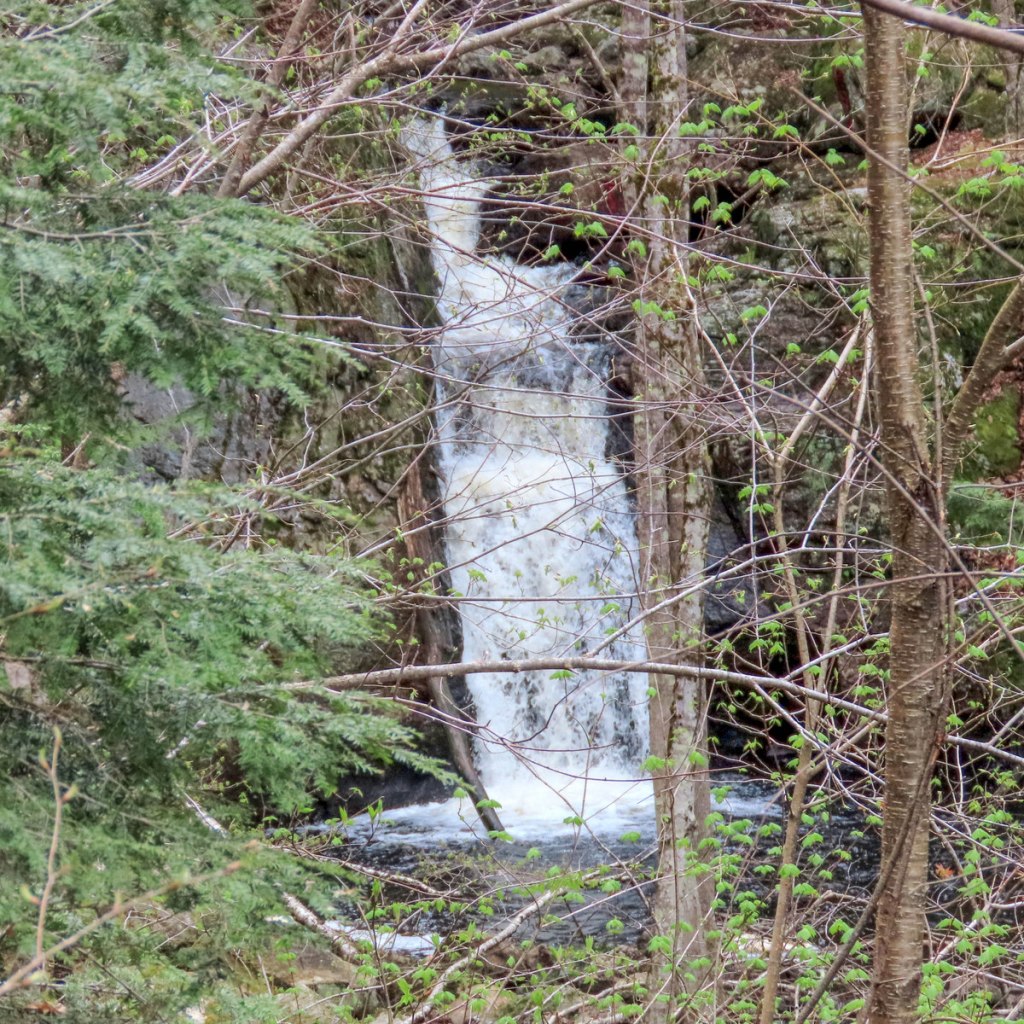
I was able to get a passable shot of Beaver Brook Falls through the brush but when all the leaves come out it will be almost completely hidden. As I do sometimes these days, I stood looking down the narrow trail leading down to the water. It is quite steep and gravel makes it slippery and if you ever fell here you could break bones, so though my mind sometimes tries to convince me that I could still do it, I no longer listen to that voice.

I usually turn around and go back at the falls because the end of the road is not too far behind where I was standing when I took this shot. The end of the road is the new route 9 north highway that was built right across this road in the late 1960s so if you keep going you run into a huge mound of dirt with a highway on it.
Going back, it isn’t far from here to the starting point but there is so much to see, what isn’t even a mile of distance can (and does) take hours. I spent parts of three days here and I’ve barely scratched the surface of what there is to see here in this post.

I took one last look at Beaver Brook before leaving. It was behaving itself and it gurgled and giggled and chuckled softly beside me the entire time I was here. It was my only companion; I saw nobody else on the road during any of the days I visited the place, and that seemed odd. Part of what makes this place so special is how there is a paved path right through a forest that has remained pretty much untouched since the road was built in the 1700s. It’s perfect for families with baby strollers, those in wheelchairs, or those who wish to simply experience the beauty and silence of nature. And it’s just minutes from downtown Keene, NH.
The goal of life is to make your heartbeat match the beat of the universe, to match your nature with Nature. ~Joseph Campbell
Thanks for stopping in.




